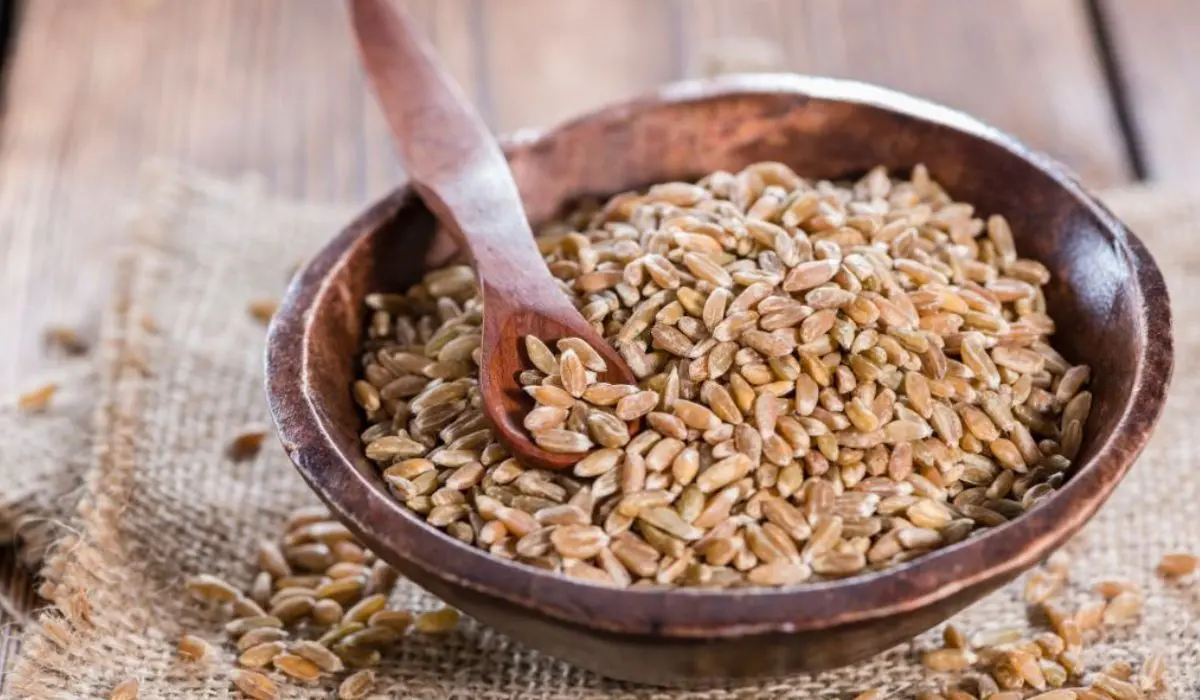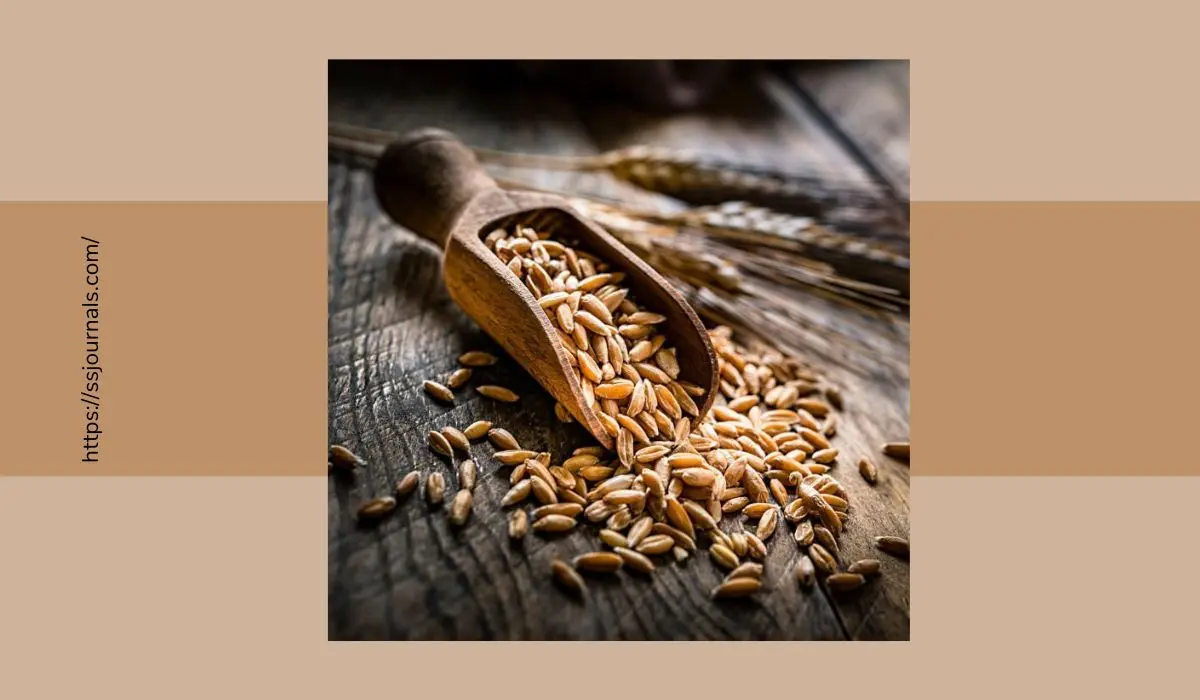Farro has grown in popularity in recent years as a nutritious ancient grain. But if you follow a gluten-free diet, you may be wondering: Can you eat farro safely or does it contain gluten?
Read on to learn all about farro’s gluten content, nutrition profile, different varieties, and how it compares to other gluten-free grains.
Can You Eat Farro If You’re Gluten-Free?
Farro is an ancient wheat grain that originated in the Fertile Crescent and has been grown for over 10,000 years. Italians often use farro in soups, salads, and warm grain bowls. Farro offers a nutty flavor and chewy texture. However, there is confusion regarding its gluten-free status.

Gluten is a group of proteins found in certain cereal grains like wheat. People with celiac disease or non-celiac gluten sensitivity must avoid gluten as it triggers an autoimmune reaction and unpleasant symptoms.
Wheat varieties like spelt, kamut, einkorn, and farro have gluten content similar to modern wheat. But farro may still fit into a gluten-free lifestyle in moderation for some individuals.
The Gluten Content Of Farro
- Farro is not gluten-free. It does contain gluten since it is an ancient form of wheat.
- The specific gluten content ranges from 0.75-2% by weight, comparable to modern wheat.
- Farro contains gluten proteins including gliadins, glutenins, and other prolamin proteins that trigger issues for those sensitive to gluten.
- While farro is often easier to digest than modern grains, it is not safe to eat for people with celiac disease or a confirmed wheat allergy.
- Those with mild gluten sensitivity may tolerate small servings of farro in rotation with naturally gluten-free grains.
So in summary, farro should be avoided on a strict gluten-free diet due to its gluten content. However, some people report better tolerance to ancient grains like farro compared to modern varieties.
Different Varieties Of Farro
There are three main varieties of farro, which vary slightly in gluten content:
- Farro Piccolo – The most common type, also known as einkorn. Highest in gluten at nearly 2% protein.
- Farro Medio – Also called emmer. Contains around 0.8% gluten.
- Farro Grande – Known as spelt. Gluten content is around 0.4-0.6%.
Spelt and emmer may be somewhat better tolerated, but all farro species contain unsafe gluten levels for celiacs. Check the package to determine which farro type you are purchasing if gluten content is a concern.
How Farro Compare To Other Gluten-Free Grains?
Here’s a glance at how the nutrition of farro compares to popular gluten-free grains:
| Quinoa | Slightly higher protein than farro. Lower GI. Gluten-free and more complete amino acid profile. |
| Brown Rice | More fiber in farro. Rice is gluten-free. |
| Oats | Contains avenin protein similar to gluten. Oat intolerance is possible. |
| Buckwheat | Gluten-free, higher antioxidants. Lower protein than farro. |
| Amaranth | Gluten-free with more fiber and protein than farro. |
| Millet | Gluten-free, with higher antioxidants. Lower protein than farro. |
| Sorghum | Gluten-free. Similar calories and carbs to farro. |
So while farro offers nutrition benefits like fiber, protein, and minerals, many naturally gluten-free whole grains provide comparable nutrients.
The Benefits Of Farro For Gluten-Free Diets
Despite containing gluten, farro may offer a few advantages when included occasionally in a gluten-free eating pattern:
➜ Provides more variety and prevents diet boredom
➜ Minimizes potential cross-contamination with other wheat
➜ Small servings may be tolerated by those with mild sensitivities
➜ Allows social inclusion at meals with farro dishes
➜ Supplies prebiotics to feed beneficial gut bacteria
However, individuals with celiac disease should strictly avoid all forms of farro due to the gluten content. Those with a wheat allergy should also steer clear. Use caution and monitor symptoms closely if experimenting with farro.
How to Incorporate Farro into a Gluten-Free Diet?
People with mild gluten sensitivity who wish to trial farro can follow these tips:
➜ Check with your healthcare provider before introducing farro
➜ Start with just 1-2 tablespoons prepared farro at a time
➜ Limit farro to just 1-2 times per week maximum as part of a varied, gluten-free diet
➜ Look for gluten-free farro products clearly labeled “gluten-free”
➜ Avoid farro dishes at restaurants due to cross-contamination risks
➜ Watch closely for any return of symptoms and stop farro immediately if issues arise
➜ Work with a registered dietitian knowledgeable in gluten-free diets
Be sure to check food labels carefully for possible hidden sources of gluten even when choosing gluten-free farro. Discontinue use if any concerns develop after eating farro. Pay attention to your individual tolerance.
Cooking And Serving Tips For Farro
Farro makes a hearty, nutritious addition to many dishes. Here are some tasty ways to cook farro:
◾️ Prepare as a grain bowl topped with sauteed veggies, greens, beans, cheese, nuts and vinaigrette
◾️ Toss cooked farro into soups, salads, or stuffings
◾️ Include in veggie burgers or fritters for added nutrition and texture
◾️ Use as a fiber-rich component in breakfast bowls with fruit, yogurt, and nuts
◾️ Swap farro in for rice or quinoa in your favorite pilaf, risotto, or stir fry recipe
◾️ Enjoy a warm farro and blueberry breakfast porridge topped with cinnamon
◾️ Make farro “polenta” by simmering into a creamy, polenta-like consistency
So if you don’t have celiac disease or wheat allergy, experiment with incorporating minimally processed farro into your gluten-free diet in place of more refined grains. But always put your health first and avoid farro if any symptoms develop.
Conclusion
To conclude, farro does contain gluten and is not considered gluten-free. But some people with mild gluten sensitivity report better digestive tolerance to ancient grains like farro compared to modern wheat.
Under medical guidance, small servings a couple times per week may be cautiously trialled by those wishing to diversify their gluten-free diet. But farro and products made with farro grain must always be avoided completely for those with celiac disease and wheat allergy.
Work closely with your healthcare team to determine your personal tolerance and optimize your unique gluten-free eating pattern for health.
Frequently Asked Questions
No, farro is not gluten-free. All varieties contain gluten since farro is a form of wheat. People with celiac disease or wheat allergy should avoid farro.
Farro grande, also known as spelt, tends to have slightly lower gluten levels around 0.4-0.6% protein compared to other farro types. But all farro should be avoided on a strict gluten-free diet.
Yes, quinoa makes an excellent gluten-free substitute for farro in most recipes. It has a similar flavor profile and nutrient density. Other gluten-free swaps for farro include brown rice, buckwheat, amaranth, or millet.
Farro is typically less processed than modern wheat, containing more fiber, protein, and micronutrients. The gluten proteins in farro may be easier to digest for some individuals. However, farro still contains gluten unsuitable for those with celiac disease or wheat allergy.
No, farro does not have less gluten than common wheat. The gluten content of different farro varieties ranges from around 0.4% for farro grande up to 2% for farro piccolo, similar to regular wheat.

